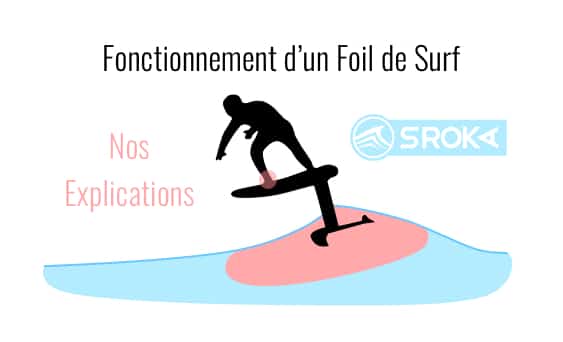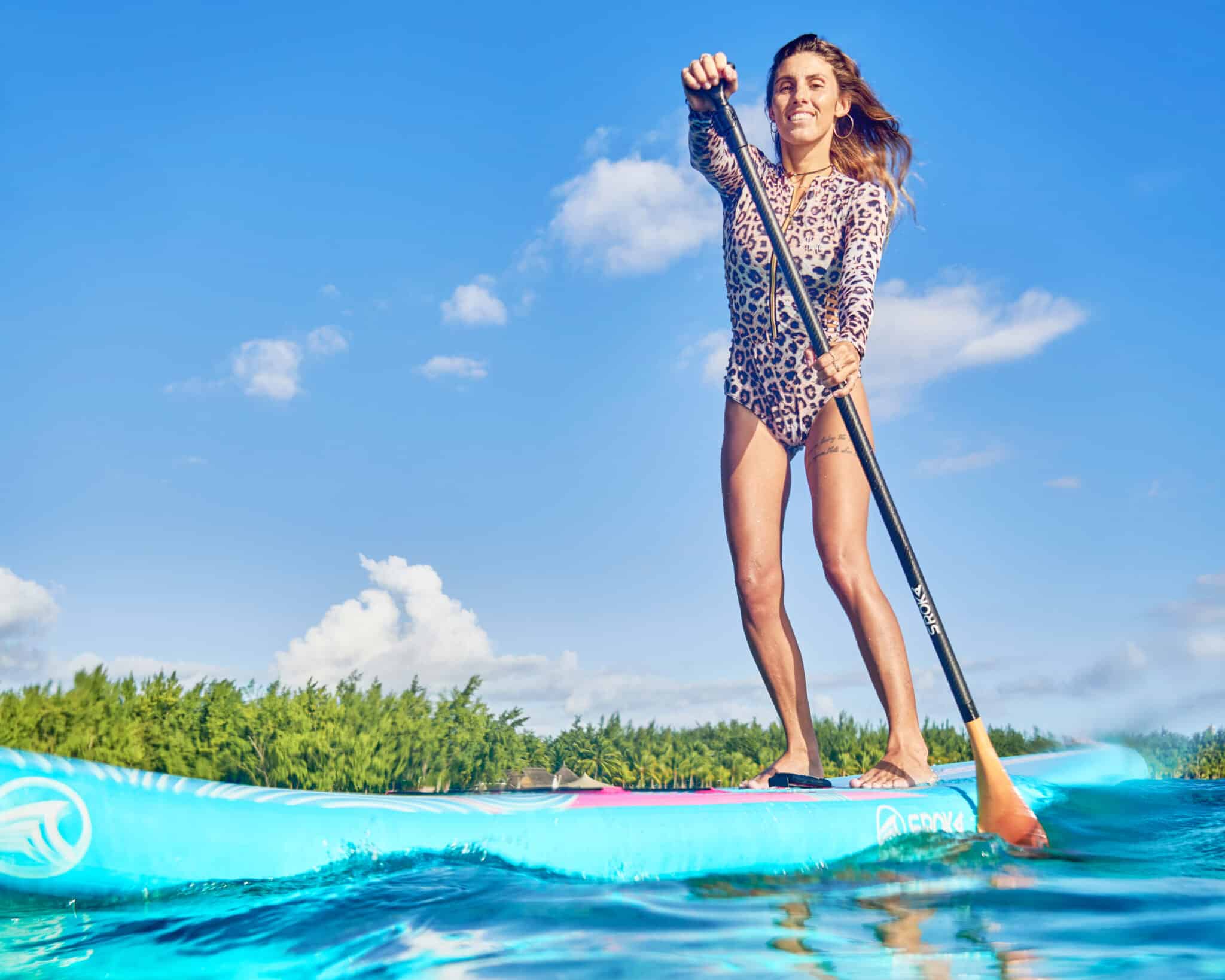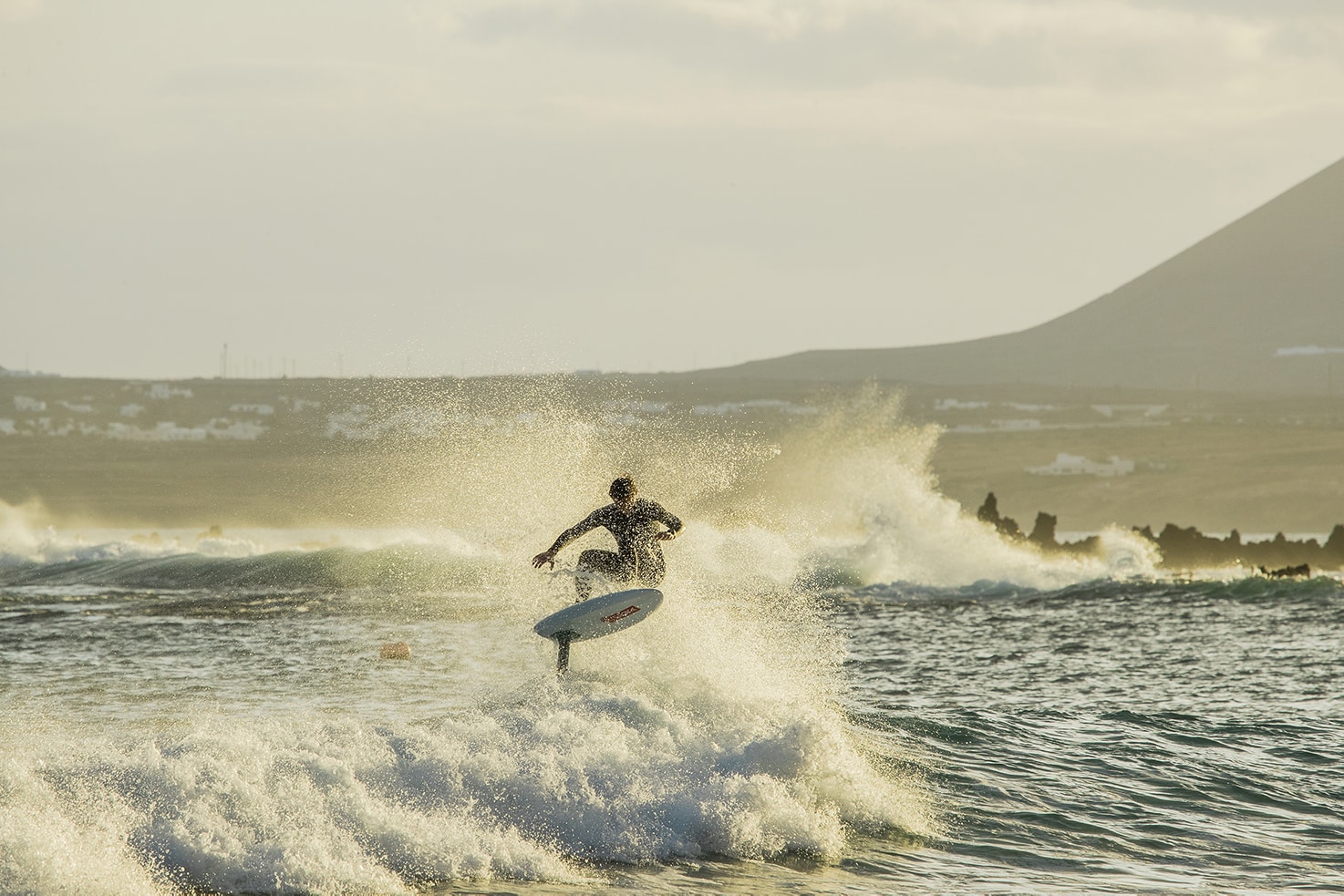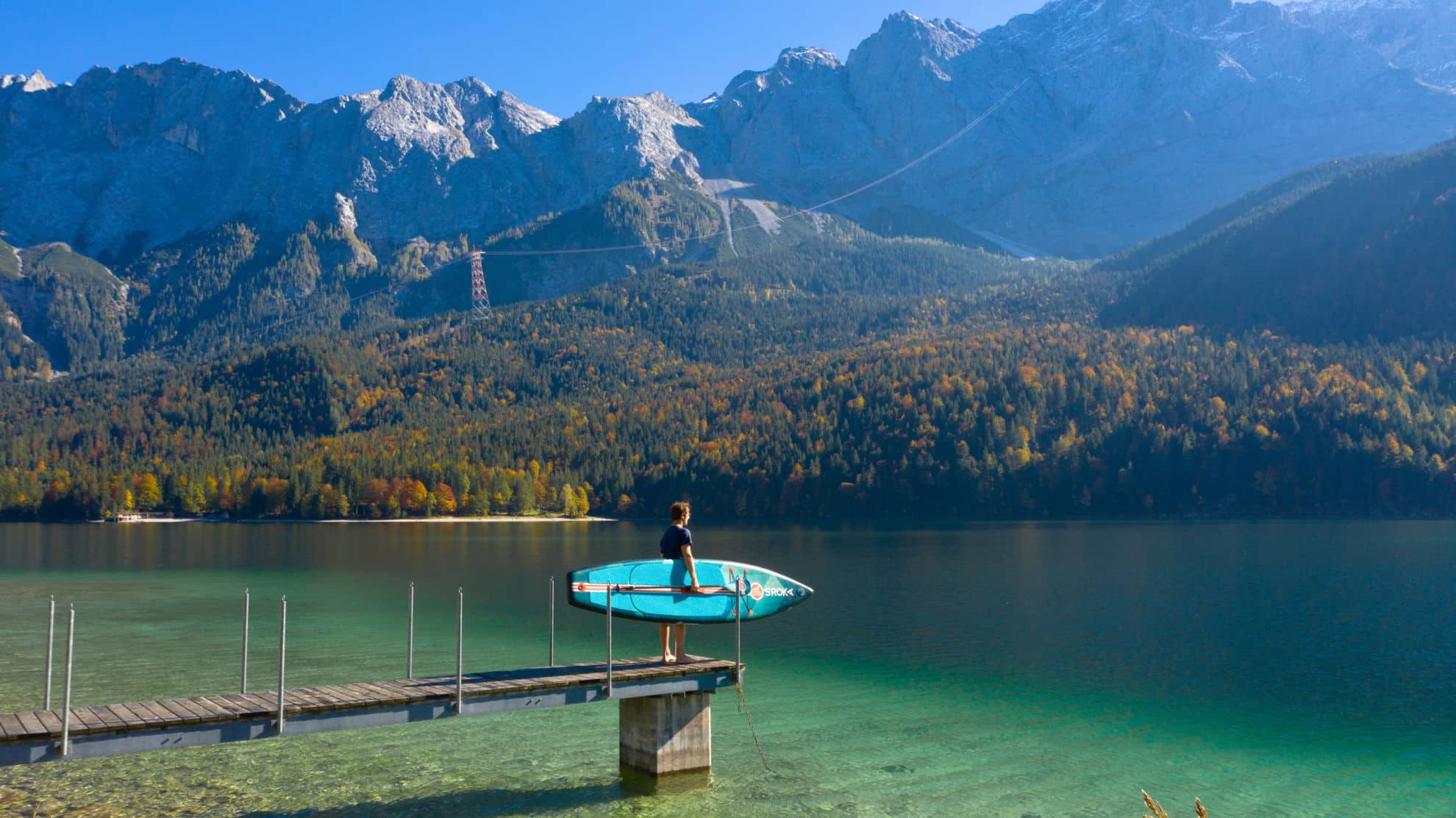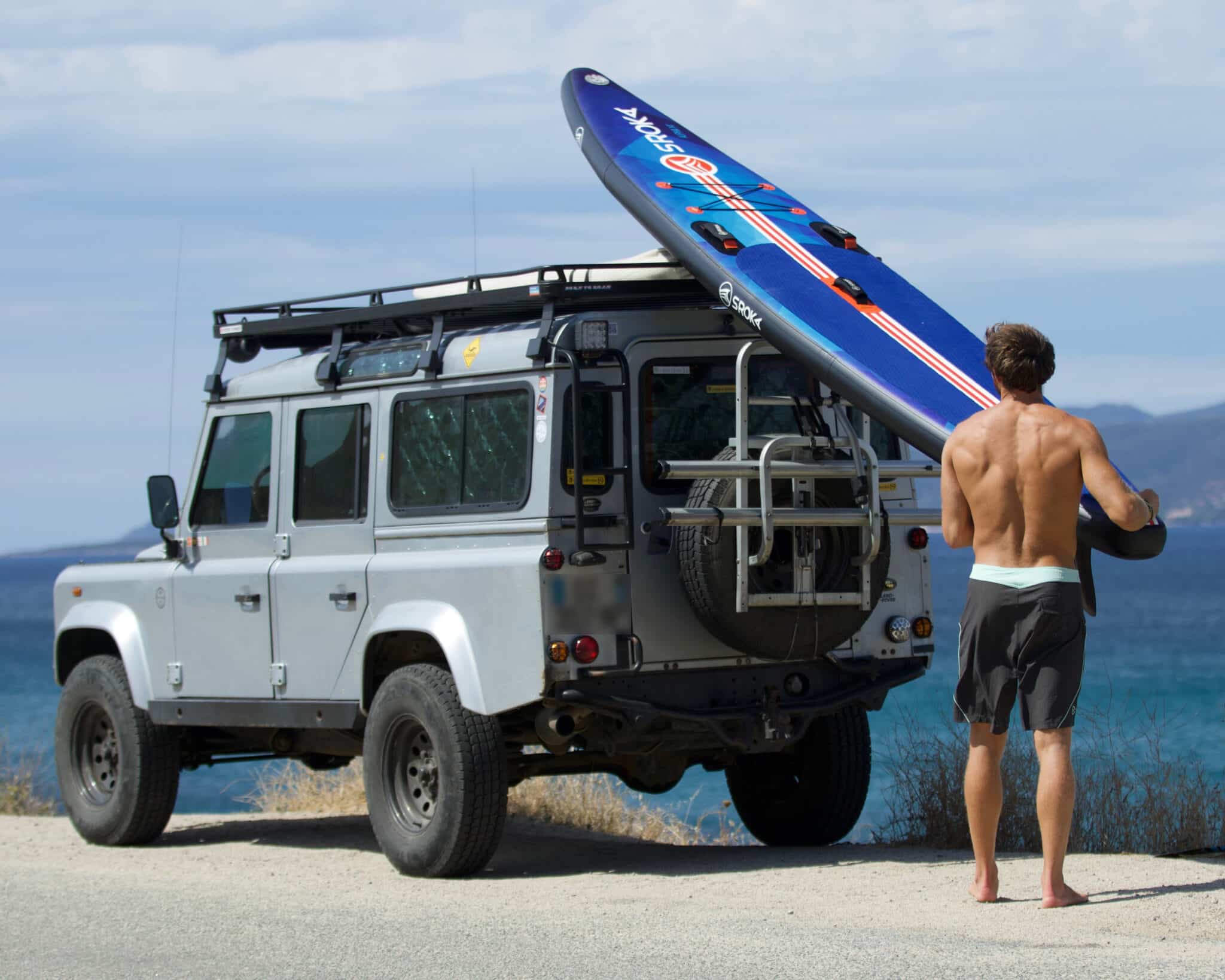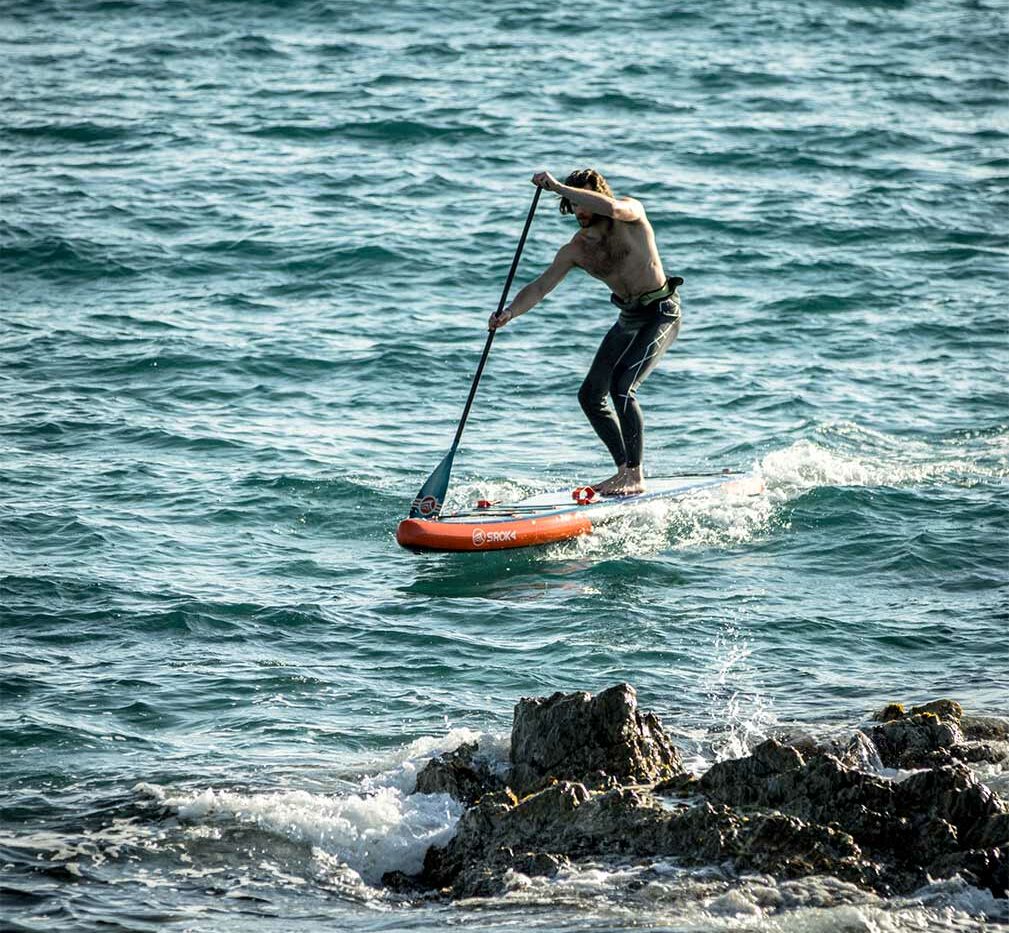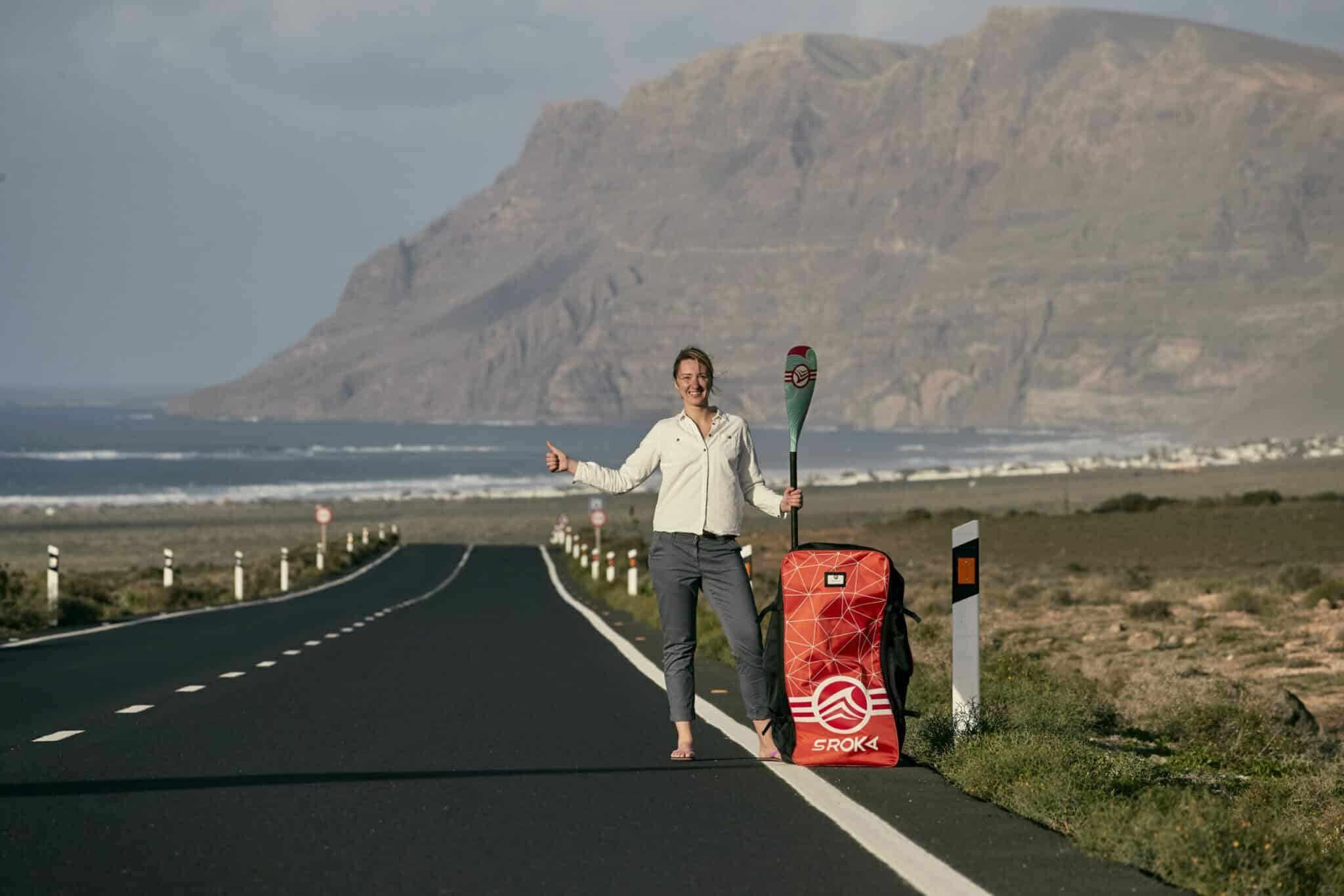 LE MAGAZINE
LE MAGAZINEChoosing the right paddle for paddleboarding!

Choosing the right paddle for paddleboarding!
The paddle is an indispensable part of the paddling experience. A paddle can be likened to the engine of a car. So choosing the right paddle for your paddling needs is essential. The right choice will determine your paddling comfort, your power to generate speed, and your efficiency so you won’t tire as much on the hard.
What type of paddle?
-
1. Fixed, adjustable or removable paddle.
- Fixed paddle: this is a paddle that cannot be adjusted in length. It’s lighter, stiffer and more powerful than an adjustable paddle, but it needs to be cut to the right size for you. In fact, it’s designed for experienced paddlers with regular practice and a defined sailing style.
- Adjustable paddle: this is a paddle that can be adjusted in length using a system of clips or screws. Heavier, less rigid and less efficient than a fixed paddle, it offers greater versatility and comfort. Suitable for beginners and intermediate paddlers who enjoy occasional or varied paddling.
- Dismountable paddle: a paddle that separates into two or three parts for easy transport and storage. It can be fixed or adjustable. It’s more practical than a one-piece paddle, but there’s more risk of breakage or play at the joints.
Which material to use?
-
2. Aluminum, fiberglass or carbon handle? Which do you prefer?
- Aluminium: this is a strong, resistant and economical material, often used for the handle or blade. It offers good stability in the water, but is also heavy and cold. It’s ideal for beginners or occasional paddlers looking for an inexpensive, durable paddle.
- Fiberglass: a lightweight, rigid and resistant material, often used for the handle or blade. It offers good performance and power transfer, but is also more expensive and more fragile than other materials. Suitable for intermediate to advanced paddlers looking for a quality paddle.
- Carbon: this is a very light, very rigid, high-performance material, often used for the neck or blade. It offers excellent responsiveness and comfort, but is also very expensive and shock-sensitive. It’s ideal for experienced or expert paddlers looking for a top-of-the-range paddle.
3. Which blade size?
- The blade plays an important role in the performance of a paddle. It comes in a variety of shapes and sizes. As a general rule, the wider the blade, the more water it propels. The power of the movement means less frequent paddling. A narrower blade requires less force to paddle. As paddle strokes are less efficient, you need to produce more strokes to advance at the same speed as with a wider blade, so if you’re looking for comfort, opt for a wider blade. If you’re looking for performance, reduce the paddle blade size.

What type of pale
As with the paddle shaft, there are different types of blades.
Most of the blades are made of plastic: light, flexible and inexpensive, but very strong. It allows good maneuverability, but is also less rigid and less efficient than other materials. It’s ideal for beginners or occasional paddlers looking for a paddle that’s easy to use and very sturdy.
Then there are composite blades, generally fiberglass or carbon, which provide rigidity, efficiency and performance. However, they are more expensive and more fragile to impact. So for families with children, we advise against this option.
-The blade plays an important role in the performance of a paddle. It comes in a variety of shapes and sizes. As a general rule, the wider the blade, the more water it propels. The power of the movement means less frequent paddling. A narrower blade requires less force to paddle. As paddle strokes are less effective, you need to produce more strokes to advance at the same speed as with a wider blade.
In conclusion, a wide blade is best suited to strong riders who can produce powerful paddle strokes without tiring too quickly. A narrower blade is generally intended for women and children with less arm strength.

How long should a paddle be?
The length of a paddle depends on several factors: the size of the rider, the thickness of the paddle board, its width, but also the activity practiced with the paddle.
As a general rule, add 10 to 20 cm to your height to find the length of your paddle. But this is by no means an absolute rule, as not all paddle activities require the same paddle length. For paddle surf, the paddle should be a little shorter to avoid impeding your movements. Do you like to take long trips on your Stand Up Paddle? If so, don’t cut corners on paddle length. Here are a few guidelines to help you choose your paddle.
- For paddle surf or short-distance rides, choose a paddle 8 cm higher than your height.
- Looking for a versatile paddle for medium-distance tours on SUP? Choose a paddle 20 cm taller than you are.
- Long-distance paddling is best done with a paddle 25 cm higher than your waist.
To conclude
To choose the right paddle for your paddling needs, you need to take into account your level, your physical size, your frequency of use and your sailing style.
- If you’re looking for performance, we recommend the 60% carbon paddle, which will give you rigidity and performance.
- If you are looking for a family paddle at an attractive price, we recommend a paddle with an aluminium shaft and a plastic blade.
- You’re looking for a combination of performance and strength: a carbon shaft with a plastic blade. The 50% carbon paddle with a carbon-look plastic blade is for you.
- You’re looking for a paddle for your child to row with you. Take the kids paddle.
Compare a paddle to a car. The board is the body of the car, and the engine of your car is the paddle. So choosing the right paddle will optimize your paddle’s performance and paddling efficiency. A good paddle will last a lifetime. A board will change with your technical evolution.
 Le Magazine
Le Magazine



